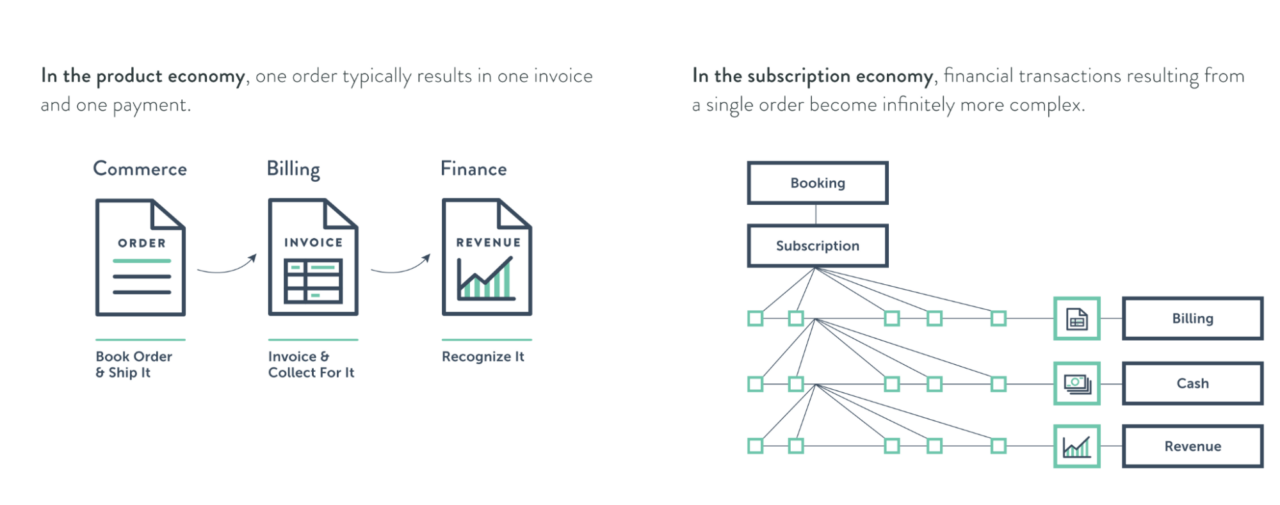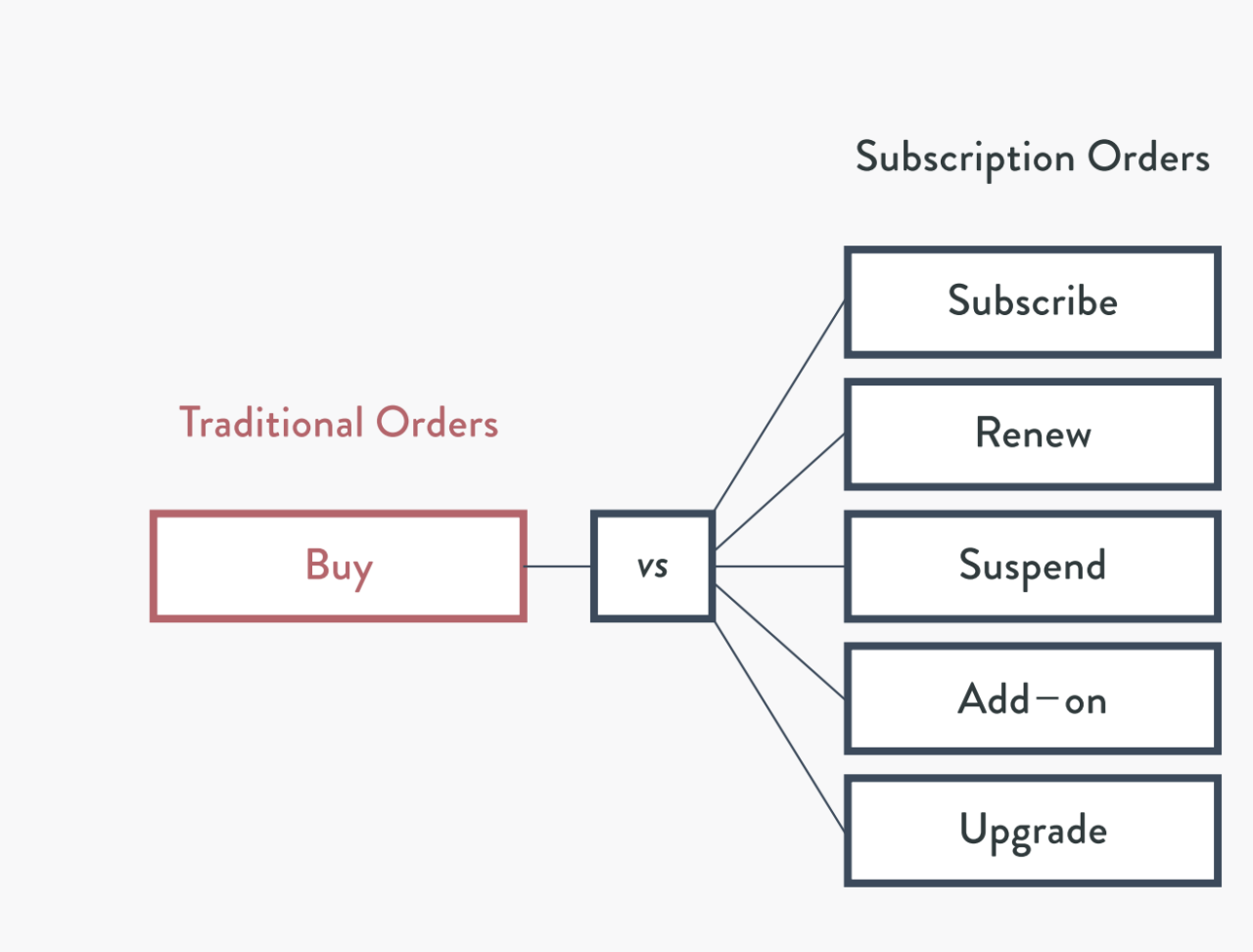ERP INTEGRATION
How to transform your ERP

As businesses evolve from product-based and single transaction models to recurring billing models with more predictable revenue streams, traditional Enterprise Resource Planning (ERP) systems become less suitable.
For organizations accustomed to the conventional product-sale model, shifting to subscriptions can be both promising and perplexing. The complexities of recurring billing cycles, dynamic pricing structures, customer churn, and personalized service offerings can strain legacy ERP systems.
The shift to recurring billing often leaves businesses to grapple with disjointed systems, manual workarounds, data inconsistencies, and the inability to extract meaningful insights from their operations.
Amidst this transformation, one critical challenge stands out: adapting Enterprise Resource Planning (ERP) systems to suit the unique needs of subscription-based businesses.
This article offers actionable ways for subscription-based enterprises to transform their ERP systems.
Does your business need to rethink your ERP?
Subscription models have always involved cohesive customer engagement, recurring billing cycles, and real-time data requirements, which legacy ERP systems are unable to support.
With legacy solutions, come iffy response times, disjointed data silos, and an inability to adapt quickly. Naturally, these limitations can hinder a company’s competitiveness and growth potential.

A subscription-based business must handle complex processes like subscriber acquisition, retention, and pricing structure management. You need a new ERP approach to create, and maintain, an edge.
Signs your ERP system needs a transformation
How do you recognize it’s time to scale your ERP? As technology and businesses evolve, even the most robust ERP software might experience performance degradation, inefficiencies, or limitations.
Here are some signs it’s time to rethink your ERP:
Increasing complexity
When your ERP starts to struggle with complex workflows and data analysis, your system can no longer match your current needs.
Revenue leaks
Traditional ERP systems run into problems managing subscription billing, pricing tiers, and contract renewals. These can all leave holes in the business’s revenue potential.
Billing errors
ERP systems are designed to manage an organization’s operational and financial processes. However, subscription businesses require high levels of accuracy and timeliness. When an ERP system has frequent billing errors, incorrect charges, or delayed invoices, it could indicate a system upgrade is necessary.
Assessing your current ERP’s operational challenges
Evaluate your ERP system’s overall performance, including system response time, data processing speed, and scalability. Are there recurring errors or just occasional data inconsistencies? Find and note these gaps.
A subscription-based business could also have other important needs, such as customizations, add-ons, revenue recognition, flexibility, and integration. Your ERP system must handle complex financial calculations and be able to provide your customers with a single bill.
One order in the subscription economy can lead to multiple billing and revenue schedules and multiple collection events, something that traditional ERP systems were not architected to handle.

If your current ERP system doesn’t support these, it could be time to rethink your solution.
Comparative analysis of your competitors and users
How does your current ERP system fare against your competitors and industry peers? Does the system’s capabilities and features make it easier to buy from you than a competitor?
A comparative analysis also helps you gather feedback from your ERP system users to understand their pain points and needs. How do those experiences compare with alternative solutions in the market?
Monitor market trends
How do you intend to keep up with the growth of the subscription economy? Your ERP system needs to be agile and adaptable to stay on the edge of these changes. You need the ability to modify pricing structures quickly, launch new products or features, and adjust subscription plans.
These days, personalized customer experience is the name of the game. Modern ERPs are expected to have enough customer data analysis capabilities to provide insights into preferences, behavior, and usage patterns. If your ERP system can’t cater to these, it’s time to rethink it.
Related: 4 ways ERP fails subscription businesses
Planning the ERP reinvention process
Transforming your ERP system is a meticulous process involving a lot of planning. Here are a few ways to make the process smoother:
Gather stakeholder buy-in
Key organizational stakeholders bring diverse perspectives, expertise, and insights that can significantly impact the project’s success.
Define goals and expectations
Build a clear roadmap for the entire process, including your objectives. This could be as simple as improving operational efficiency, customer satisfaction, or overall business growth.
Outlining your goals helps you maintain a common purpose, align your team’s efforts with stakeholders, and set benchmarks.
Implement a pilot program
A pilot program helps identify and mitigate early risks before you implement the new ERP system across the entire vertical. When you can resolve challenges during the pilot phase, this reduces the likelihood of disruptions during full deployment.
The pilot program should lead into a controlled testing phase, where a small group of users tests your system’s functionality, usability, and performance in a real-world setting.
7 ways to refresh your ERP
You’ve determined that your ERP system needs to be updated. Here are seven actionable ways to transform your ERP system in order to meet the demands of your subscription business.
1. Customize your existing ERP
Rather than a complete overhaul, your existing ERP system might benefit from a customization. Under the right conditions, you only have to identify pain points in your current ERP system and potentially add new features. Below are some customization options to consider:
Tailored subscription management system
Subscription businesses need specialized functionalities to seamlessly manage recurring billing, plan changes, upgrades, downgrades, add-ons, and cancellations. Traditional ERPs often lack these features.
Businesses can customize their ERP systems to include robust subscription management, with capacity to handle recurring billing cycles for various pricing tiers.
Intuitive customer portals
With an intuitive portal, customers can track which subscriptions are active, which ones are due for renewal, and which subscriptions have been canceled. It also lets them access billing information, track spending, and confirm they are billed correctly. All this information helps customers avoid overpaying.
For the business, such a feature makes resolving billing issues quicker and easier.
2. Integrate new technologies into your current ERP
In the midst of the fourth Industrial Revolution, your ERP should meet the demands of the era: integrating new technologies and switching from on-premise to cloud.
Transitioning to cloud ERP solutions offers easier deployment and fewer hardware and software requirements. This approach can especially benefit businesses that want to reduce production costs and maximize operational efficiencies.
Additionally, incorporating new technologies such as artificial intelligence, machine learning, the Internet of Things, and robotic process automation with cloud ERP offers businesses more enhanced efficiency, agility, and competitiveness. However, it’s crucial to conduct thorough research and only select emerging technologies that align with your specific objectives.
Advanced analytics and reporting
Better analytics abilities from your ERP can help you gain meaningful insights into your subscriber behavior — from purchasing behavior to the likelihood they’ll churn. When you can identify these trends, you can improve your marketing and customer service efforts.
Advanced analytics is also great for task automation, like sending marketing emails or generating reports. You get to free up more time for other important tasks.
3. Automate complex financial transactions
An automatic system that can handle complex financial calculations, align product changes with customer bill cycles, and simplify the renewal process will make it much easier for customers to add more services.
It’s not hard to see why: In the subscription economy, one order can lead to multiple billing schedules. Typically, ERP systems were never designed to handle those, so your ERP system will need to be fully customized to handle these actions.
Related: Questions to ask your ERP vendor about their revenue recognition module
4. Iterate pricing and packaging
New product and pricing changes need to be automated into your sales channels within minutes — without burdening IT or finance.
Your system should give your marketing department the flexibility to try a new time-based promotion, price point, or even an entirely new pricing model. But it needs to be able to do so without draining IT resources to roll out a change.
The ability to change pricing quickly is critical; our customers rarely get their subscription pricing right the first time. Successful businesses optimize pricing through A/B testing to find what sells the best — and your ERP system should help you do this.
Related: How to accelerate iteration on pricing, bundles, and promotions
5. Instill business model agility
In the subscription-based economy, orders can include a new sale, upgrades, downgrades, add-ons, renewals, or cancellations. Throughout your company growth projections, you may need to expand your offerings or support an indirect sales channel.
When such a change happens, you’ll need to adjust your business processes, such as moving from a salesperson-driven sales process to web self-service. An easy-to-use B2C/B2B platform can help you manage these changes. Expanding or pivoting to new business models should be premeditated, easier, and faster.
6. Integrate your general ledger
Your ERP system belongs in your general ledger, but how can that happen quickly and compliantly? Aim to implement an ERP system that supports your chart of accounts, accounting periods, and accounting period close process. Your ERP should also respect the integrity of a closed accounting period and provide an event-driven, revenue recognition module.
If you can manage it, your ERP should also be able to generate a summary journal entry report. Open, standards-based APIs will come in handy to export and merge data and reports.
Related: The State of Revenue Accounting report
7. Switch to a new ERP vendor that supports subscription business
Two reasons a business may consider replacing it’s ERP system are:
- Businesses outgrow or will soon outgrow their current capacity to handle transaction volume, and it’s too difficult to configure the business-specific requirement.
- Migration from on-premise to on-cloud ERP.
Due to the complexity of replacing an ERP system a senior team leader such as the CFO should assess whether the current system addresses business needs, and what the new software aims to achieve.
You can make the shift to a new ERP vendor, rather than reinvent your existing one. A new ERP vendor aligned with your industry can provide features specifically designed to support subscription models.
However, switching to a new vendor involves costs beyond the software itself. These include data migration, training, and potential downtime during the transition period. Also, your employees will need time to adapt to the new system, which can temporarily impact productivity.
Related: 10 things you should know about your ERP revenue module
Advantages of ERP transformation
1. Improved data processing and reporting
A robust ERP system lets you automate your customers’ data entry and processing, which saves time and improves accuracy. It also offers real-time data access, which empowers faster business decisions.
2. Streamlined business operations
With a redesigned ERP, efficiency, accuracy, and visibility span across all departments. This can reduce operating costs, improve customer service, and increase profitability.
3. Increased cost efficiency
By automating financial processes, ERP transformation can create significant cost savings. You’ll also gain visibility over your operating costs, which can help identify and eliminate waste.
4. Better supply chain management
A business’s supply chain also benefits from an updated ERP. You’ll get deeper insights into your inventory levels and locations, plus optimize ordering and shipping. With that boost to order fulfillment, customer service also improves.
Challenges during ERP transformation
Businesses may face some drawbacks while updating their ERP:
Vendor selection
Selecting an ERP vendor that fits your new qualifications can get complex, time-consuming, and overwhelming. You might find it challenging to assess the vendor’s experience and reputation.
Data migration and integration
Migrating data from the old ERP to the new system can also take a while — and be very complicated. To avoid data loss or corruption, you’ll want to ensure data integrity and seamless integration with other business applications.
Business continuity
As the system transitions, employees might need to learn new processes, and there could be temporary slowdowns. It’s a balancing act to ensure the business continues to operate smoothly without disrupting customers’ experiences.
Resource allocation
It can be demanding to assign sufficient resources (including time, budget, and skilled personnel) for an ERP update project while also managing day-to-day business operations. You could experience some challenges when you change where employees direct their time and effort.
Resistance to change
Your employees and stakeholders may have gotten accustomed to the existing processes and workflows. Naturally, any proposed changes may temporarily disrupt workflows.
How to overcome challenges of ERP transformation
You can overcome these hurdles with the following strategies:
Develop a step-by-step plan
A roadmap that outlines the entire process will make it easier to manage and communicate changes to stakeholders. A clear structure for implementation helps break down the complex process into manageable phases.
Secure buy-in
Stakeholders buy into the change when you engage them in decision-making and address their concerns early on. This fosters a sense of ownership and involvement, which can improve understanding and acceptance of the changes.
Vendor collaboration
Vendors should have deep expertise with ERP systems. So, collaborating with them can provide valuable insights, best practices, and guidance throughout the process.
Measuring success
To understand how successfully you’ve transformed your ERP system, consider the following key indicators:
KPIs for ERP success
One important KPI is the user adoption rate. This percentage measures how well users and employees are embracing the new ERP system. Other KPIs to consider include system uptime, response time, and ROI.
Monitor progress and set improvement goals
Set clear performance metrics that reflect the desired outcomes of the changes you make to your ERP. These metrics usually encompass operational efficiency, process cycle times, resource utilization, and so on.
Adjust and update the ERP system
The success of an ERP system transformation will depend on how well it adjusts to new business goals. As these goals change, so should your business operations. The primary purpose of an ERP system is to support and enhance business processes, so ensure you’re updating it to align with current objectives.
Learn From the Best
Unlock resources from the leading experts
New Business Models
Knowledge Center
Your journey starts here
Start your free trial
Get your hands on the product and test out Zuora for free